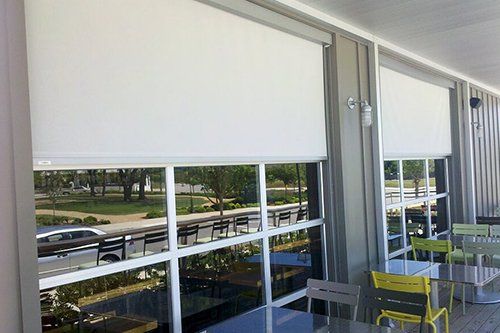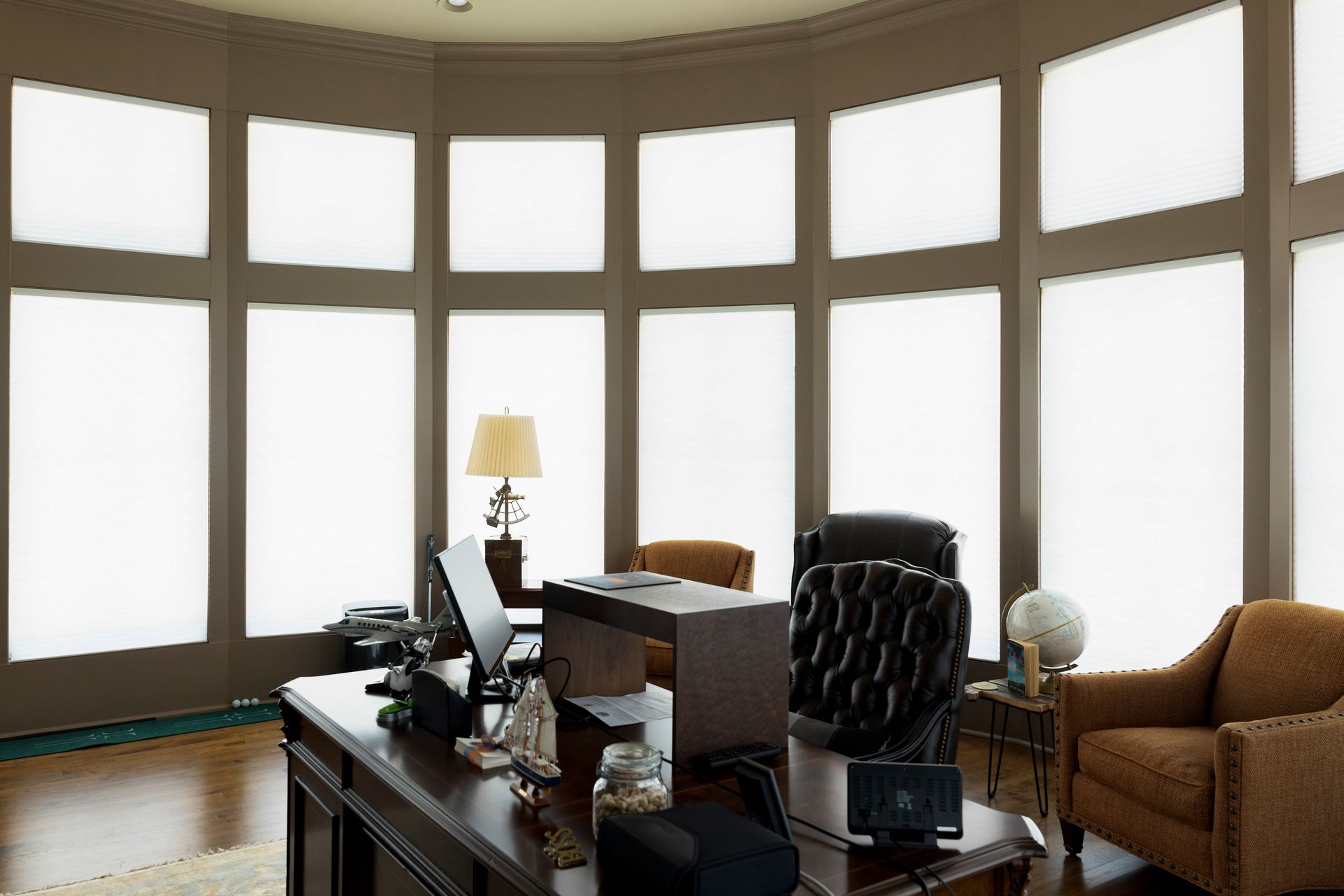Is your living room sleepable? Sleep-worthiness is usually a quality we don't consider in living room design - until it's time to host a teenage slumber party or one holiday guest too many. Coming home exhausted and napping on the couch is one of life's great joys, provided your couch is nappable. The coziness of the living room usually focuses on family time and busy activities, but a perfect living room design can also transform into an extra guest bedroom , nap spot, or the perfect place for friends to build a pillow fort for the night.
Believe it or not, it's easy to design your living room to do double-duty as a social space and a spare guest room. Just a few extra sleep-worthy additions cn make your living room design an home theater, a conversation pit, and a dreamy oasis all based on how you draw the curtains.
Blackout Curtains in Your Window Treatments
The first technique is a trick of the light. Mix blackout curtains your layered window treatments. Incorporate blackout shades between your curtains or hang blackout curtains between your filmy and decorative layers of drapes. Being able to draw the shades and block out the sunshine is essential for anyone trying to get a good night's sleep in your living room. As a bonus, blackout curtains also make your living room a better home theater during family entertainment time.
Layered and Dimmer-Switch Lights
Everyone likes their own light level when they sleep. Some people like pitch darkness while some can't drift off without a soft nightlight glow. Design your living room lighting for versatility with layered lights and a handy dimmer switch. Dimming the lights is the perfect setting for both watching movies and winding down for bed. Layered lights also make it possible for someone using you living room as a guest room to set just the right amount of light to relax into sleep.
The Right Couch for a Good Nap
Some couches are good guest beds, some aren't. In our experience, the best couch style for sleeping is a long couch with a deep seat and flat-top cushions instead of the usual convex puff. Flat cushions are the key, as they can make a comfy palette wide enough for an average adult. If you have the room and are so inclined, you can opt for a pull-out couch as an alternative. However, guests are often more comfortable on a good napping couch with no bedtime and morning transition hassle.
Extra Blankets and Throw Pillows
Don't forget the extra blankets! A couch can become instantly more sleep-worthy with just one throw blanket and a squishy throw pillow. Anyone can catch a nap with a few cozy accessories to curl up with, and these items can quickly become bedding if an extra guest finds themselves staying over. Throws are also a great way to decorate during winter months when every seating arrangement should be warm and cozy.
Smart TV with Ambient Settings
The best tech for a sleepable living room is a smart TV with soft ambient settings. Not only can you (or your guest) flip on the TV for music or show streaming at any moment, the ambient features can be essential for good sleep. Ambient TV settings dim the light and play soft sounds, similar to white noise, to help create a relaxing environment. Some smart TVs can even act as alarm clocks in the morning.
Insulated Doors or Doorway Curtains
Give your living room a little privacy, especially from noise. If you have doors to the living room, install thicker insulated doors that block sound. This is great for not disturbing the house when watching loud movies - and not being disturbed when catching a living room nap. If you don't have doors with a more open-plan home, consider hanging soundproofing curtains that can be drawn back when the living room is open for family activity.
A Deep Plush Rug
Last but not least is a decorative, plush rug. A deep rug pile is essential for a sleepable living room because you never know when a sleepover pillow fort will go under construction - especially if there are children and teens in your home. A deep rug makes even the floor more nap-worthy, not to mention a great opportunity to add a splash of color and design to your floor decor.
Is your living room sleepable? With the right mixture of fixtures and an ultimately nap-worthy couch, you can catch a few z's in your living room or use your living room as a spare guest room for friends and family when they come to visit. Contact us today for more great insights on how to make your home a cozy escape.
Expert Advice by Just Blinds


